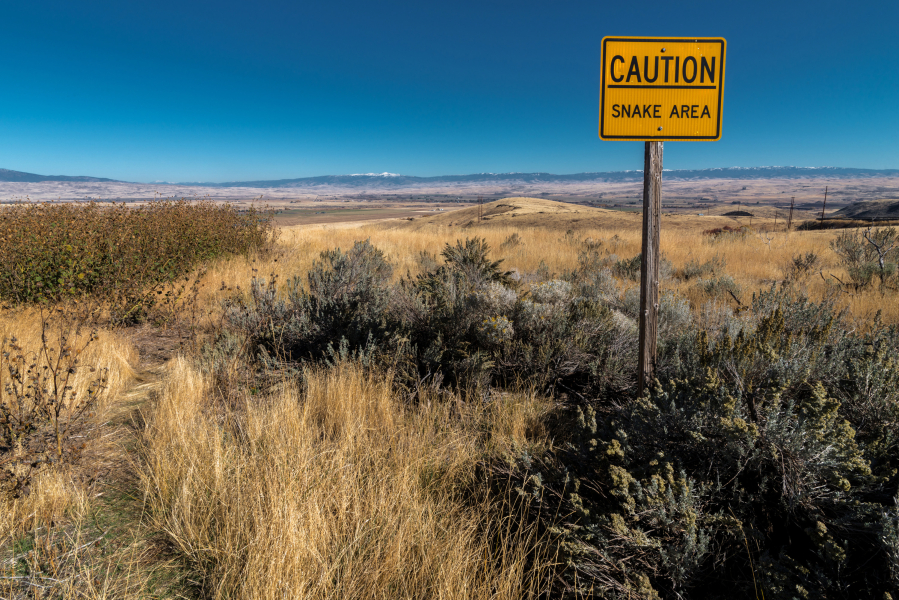BOISE, Idaho — There are 12 snake species in Idaho, ranging from the common North American racer to the rare but beautiful ring-necked snake.
But only two of those 12 are venomous: the Western rattlesnake and the less-common prairie rattlesnake.
Although rattlesnakes are generally not aggressive, they will strike when threatened or provoked, such as by unaware hikers and climbers.
Between 7,000 and 8,000 people are bitten by snakes in the U.S. per year, according to the Centers for Disease Control and Prevention, and about five of those people die. Ten percent to 44 percent of those bitten specifically by a rattlesnake suffer a lasting injury or disability.
Although rattlesnakes are active all year, most rattlesnake bites in Idaho occur between April and October, according to the U.S. Department of Agriculture, as snakes are more active during the summer and humans spend more time in nature at that time.
The Western rattlesnake is active throughout most of Idaho, including the Treasure Valley, while the prairie rattlesnake is mostly found in Lemhi, Custer, Valley and Idaho counties.
About 75 percent of rattlesnake bites contain venom, and although those bites are rarely fatal to humans, they still constitute a medical emergency. Rattlesnake venom can cause tissue damage and affect the circulatory system, which can lead to internal hemorrhaging, according to health information provider Healthline.
Both the Western and prairie rattlesnakes can be identified by the sound of their rattle, triangular-shaped head, and tan, brown and gray scaling, according to previous Idaho Statesman reporting. Both snakes can grow to about 3 feet in length.
The Department of Agriculture provides a list of safety precautions to help you avoid rattlesnake bites, and steps to take if you are bitten.
Precautions
- Wear over-the-ankle boots, thick socks or loose, long pants when hiking. Never wear sandals or go barefoot while hiking.
- Stick to well-used trails and avoid walking through tall grass, where snakes could be resting or hiding.
- Always watch where you are putting your hands and feet, especially if climbing up a rock face.
- If a fallen tree is in your path, don’t step directly over it in case a snake is on the other side; step on top first and make sure you won’t be walking into danger.
- Don’t turn over logs or rocks unless necessary, and only do so while wearing thick gloves. Also, check stumps before sitting down, and shake out sleeping bags before getting inside.
- Don’t grab random “sticks” or “branches” when in the water — rattlesnakes can swim.
What to do if bitten
- Immediately call dispatch or 911, and stay calm. A higher heart rate will pump the venom through your bloodstream faster.
- Wash the bite gently with soap and water if possible, and remove any tight clothing or jewelry around areas that may swell.
- Keep the bite below heart level if possible. This will keep the venom from reaching your heart as quickly.
- Do not applying a tourniquet or ice the wound. Many of the amputations that come from rattlesnake bites occur because the wound was iced or blood flow was restricted.
- Do not try to suck the poison out with your mouth. It could enter a cut in your mouth or be swallowed.



